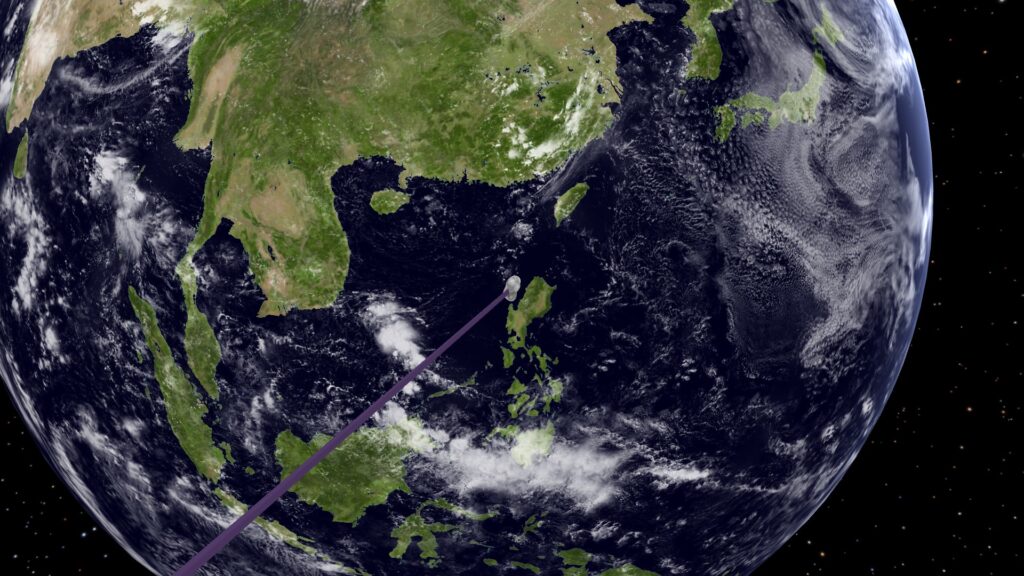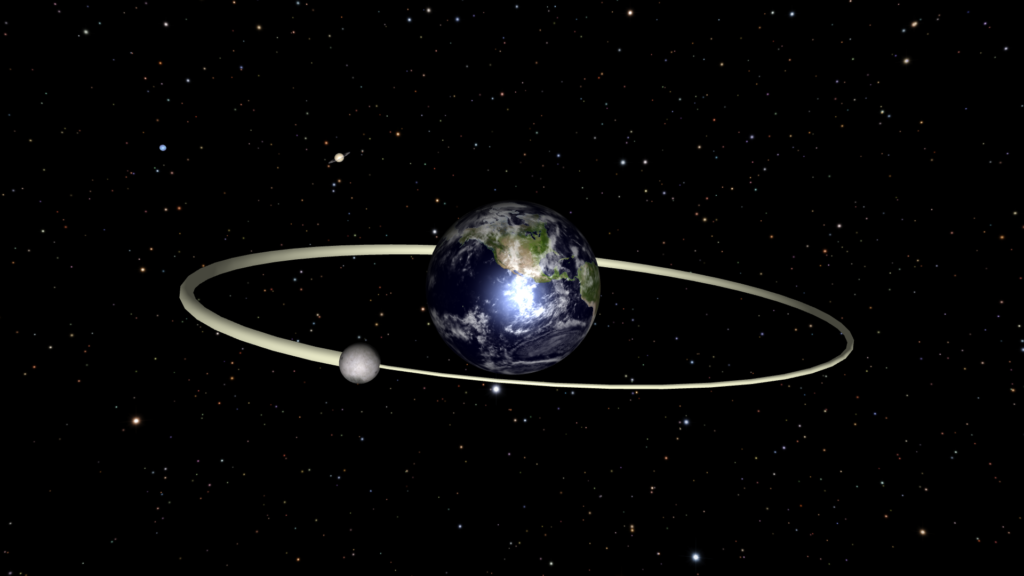A week ago, on September 27, 2024, a new comet was discovered: C/2024 S1 (ATLAS). At the end of October, it can become so bright that you can try to see its tail even during the day. The video shows the hyperbolic orbit of this comet and its trajectory against the background of stars when observed from the Earth. Watch the video with subtitles.
The first observations of a faint spot allowed us to roughly determine the orbit of the comet. It turned out that the object belongs to the Kreutz sungrazers – comets that come very close to the Sun. The objects of this group are fragments of one large comet, which once broke up into fragments when passing near the Sun. There is an assumption that the progenitor of the Kreutz sungrazers is the Great Comet of 1106. One of the most famous representatives of this group is the Comet Ikeya–Seki, which in 1965 shone in the sky 60 times brighter than the full Moon! The last observed comet of the Kreutz sungrazers was Comet Lovejoy, which was observed in late 2011.
The first preliminary calculations showed that the new comet C/2024 S1 (ATLAS) is likely to fall on the Sun. This video shows the trajectory of the comet, calculated by the author of this publication based on 123 observations as of October 1, 2024. The trajectory is weakly hyperbolic, which means the Sun will not be able to keep the comet in the Solar system. Moreover, the comet on its way to the Sun had no encounters with the gas giants. Apparently, the excess of its velocity arose due to some non-gravitational effects, and this is a curious topic for further research.
According to my calculations, the comet C/2024 S1 (ATLAS) will pass only 534 thousand km from the surface of the Sun – this is less than one solar radius. This will happen on October 28, 2024, at approximately 11:00 UTC. The speed of the comet relative to the Sun will exceed the unthinkable 460 km/s, which is 15 times higher than the orbital speed of the Earth! And its tail can stretch for tens or even hundreds of millions of kilometers. That is, the length of the comet tail may exceed the distance from the Sun to the Earth. However, there is a risk that comet C/2024 S1 (ATLAS) will not survive the perihelion passage. The powerful tidal impact of the Sun is very likely to destroy its core. In this case, the comet will break up into several small fragments that will stretch along its orbit. Each of the fragments will also cast its own small tail. The disintegration of the comet will accelerate the complete evaporation of its substance, but fragments consisting of non-volatile elements may remain.
The comet will be visible in the morning sky of the Southern hemisphere of the Earth a few days before October 28 and for several days after (if it does not disintegrate). In the Northern Hemisphere, it will be possible to see the brightest tail only on October 28 for several hours, where dusk will already come at that time. At this time, the tail will be so bright that you can try to see it even during the day, if you block out the dazzling Sun with something. The tail will start almost from the Sun itself and can cross a significant part of the sky. The colossal speed of the comet will allow the inhabitants of the Earth to observe the rotation of the comet and its tail around the Sun in real time. Its orbit around the Sun will take place on October 28, 2024 from about 07:00 to 15:00 with a culmination at 11:00 UTC. The combined brightness of the comet and its tail during the culmination can be several times or even tens times higher than the brightness of the full Moon. Be careful when observing the comet: do not look at the Sun in any case, so as not to get burned on the retina of the eye.
Modeling and rendering were performed by author of this video using own software. Visualization of comet and its tail is also invented and implemented by the author of this video. The calculations took into account the mutual influence of the Sun, all the planets of the Solar System, the Moon and the comet on each other. Relativistic effects were also taken into account in the calculation. Non-gravitational effects associated with the comet nucleus matter evaporation were not taken into account. Throughout part of this video, the sizes of celestial bodies are shown to be greatly exaggerated compared to the distances between them.
The track Seeker by Kai Engel sounds in this video. This track was not changed. Attribution 4.0 International license.





